On the eve of the coronavirus lockdown, Max Liberson completed a lively 10-day delivery of his 1930s gaff cutter to her new home in Wales
Due to family commitments I found myself having to move to Wolverhampton late last year from West Sussex. I’ve never lived far from the sea and the boat I have custody of, a 1936 gaff cutter Wendy May, was kept in the soft mud of Canvey Island.
It quickly became apparent that commuting from Wolverhampton to Canvey was impractical: not only was the distance long but there was no real way to avoid the ring of death (aka the M25). However, my brother Alex had long been a member of Newport and Uskmouth sailing club, and myself and my family went to visit the place. I found it welcoming, friendly and very similar to Canvey Island yacht club but on the other side of the country in South Wales. It was a lot closer to my new home so I decided Wendy May should move.
Plans were hatched. My good friend Dave Norman agreed to come and a date was set for 14 March. All winter (more like a long, windy autumn) I watched the weather with horrid fascination as one named storm after another blasted through. But towards the middle of March the rumour started that the storms would stop, and the winds would go easterly.
Then the virus situation hit and plans had to be tweaked. It looked like the country would be locked down. I didn’t want to drive my van to Canvey in case I couldn’t travel to get it back later. This meant I couldn’t bring back my hard dinghy. I toyed with the idea of leaving it, but I’d owned the dinghy for 30 years and the friend who sold it to me had been killed in a motorcycle accident not long after. I had given my son sailing lessons in it, and almost lost it off Ramsgate when I was towing it back from France and it surfed up past the boat, come tight on the painter and flipped. Some years later, I’d used it to rescue a man who had fallen out of another dinghy. The dinghy had survived quite a few boat changes and several ladies had come and gone from my life, but the dinghy remained. No, I couldn’t leave it behind.
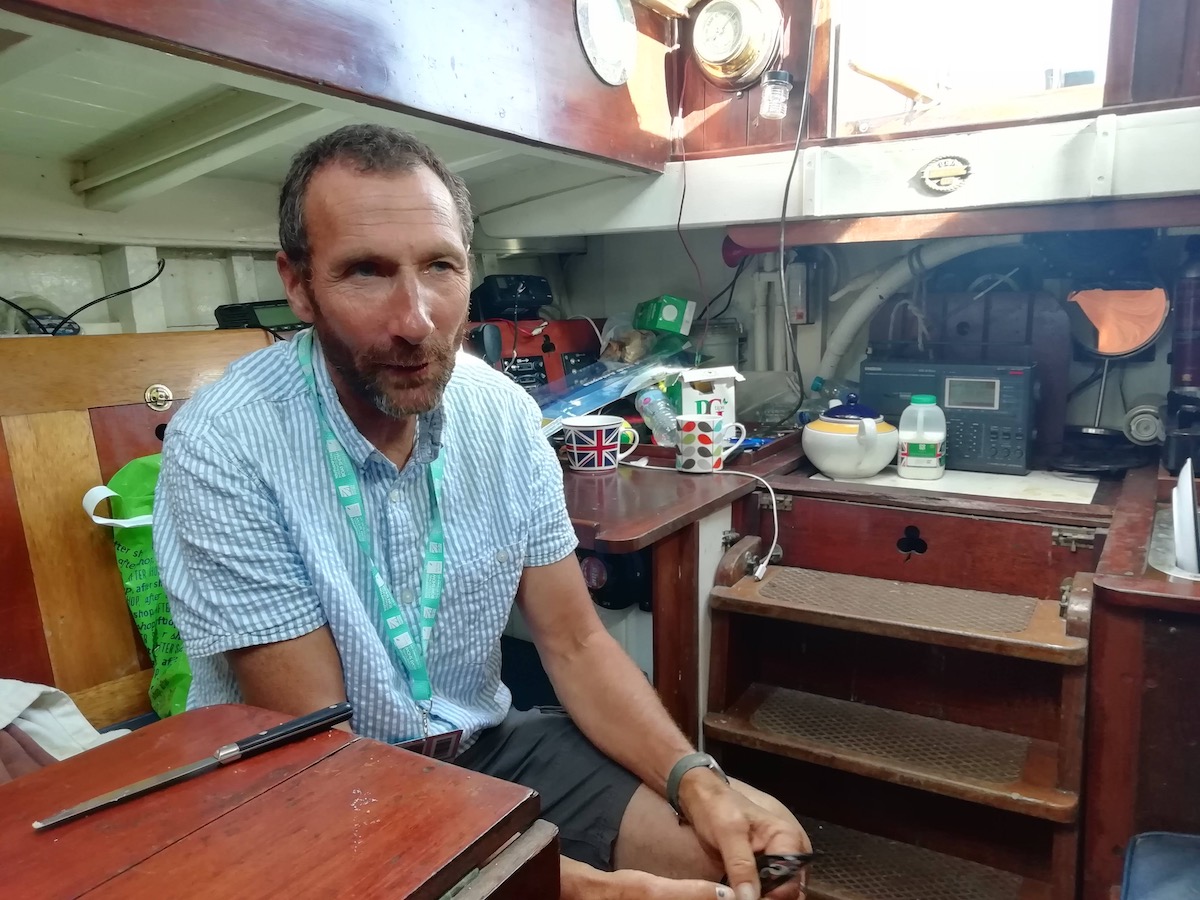
When I left my original yacht club to go boatbuilding in Portugal, I couldn’t take the dinghy, so I gave it to Dave Norman. He picked it up and found a £20 note under it. He took it to his yacht club (Benfleet) but did not use it.
After some years I ended up at Canvey Island and needed a hard dinghy. Dave gave it back to me and I rowed it to my Wendy’s berth where it fitted nicely in the space in front of the bowsprit.
I took Luna our dog for a row in it; she approved and didn’t try and escape like she did with the inflatable kayak. With this much history you can probably understand why I didn’t want to leave it behind. The other option was to tow it. I tried getting it on deck, and it just did not fit. Wendy is only 26ft on deck and the dinghy is 10ft, and heavy.
DIY dinghy drogue
So I came up with a device that deployed a small drogue (a plastic funnel) when the towing painter came slack. It was easy to rig; all I did was bolt a stainless steel U-bolt into the stem and bolt a bit of plywood onto the transom. I drilled a large hole amidships in the plywood and through this rove a 10mm nylon rope. I put two stopper knots in about 8ft apart – one knot in front of the U-bolt and one aft of it. I led the rope through the hole in the plywood, fed it through the funnel, put another stopper knot on it there and then tied a bowline to which I attached another scrap bit of old halyard and an empty paraffin container with its lid still on.
The idea is that as the dinghy is under tow the aft stopper knot is hard against the U-bolt. As the dinghy starts to surf, the drag-line pulls the funnel (drogue) into the sea clear of the turbulence of the transom, it digs in and the forward knot hits the U-bolt, and brakes the dinghy. I added another painter to the normal ringbolt, and that was that. You can see the diagrams here.
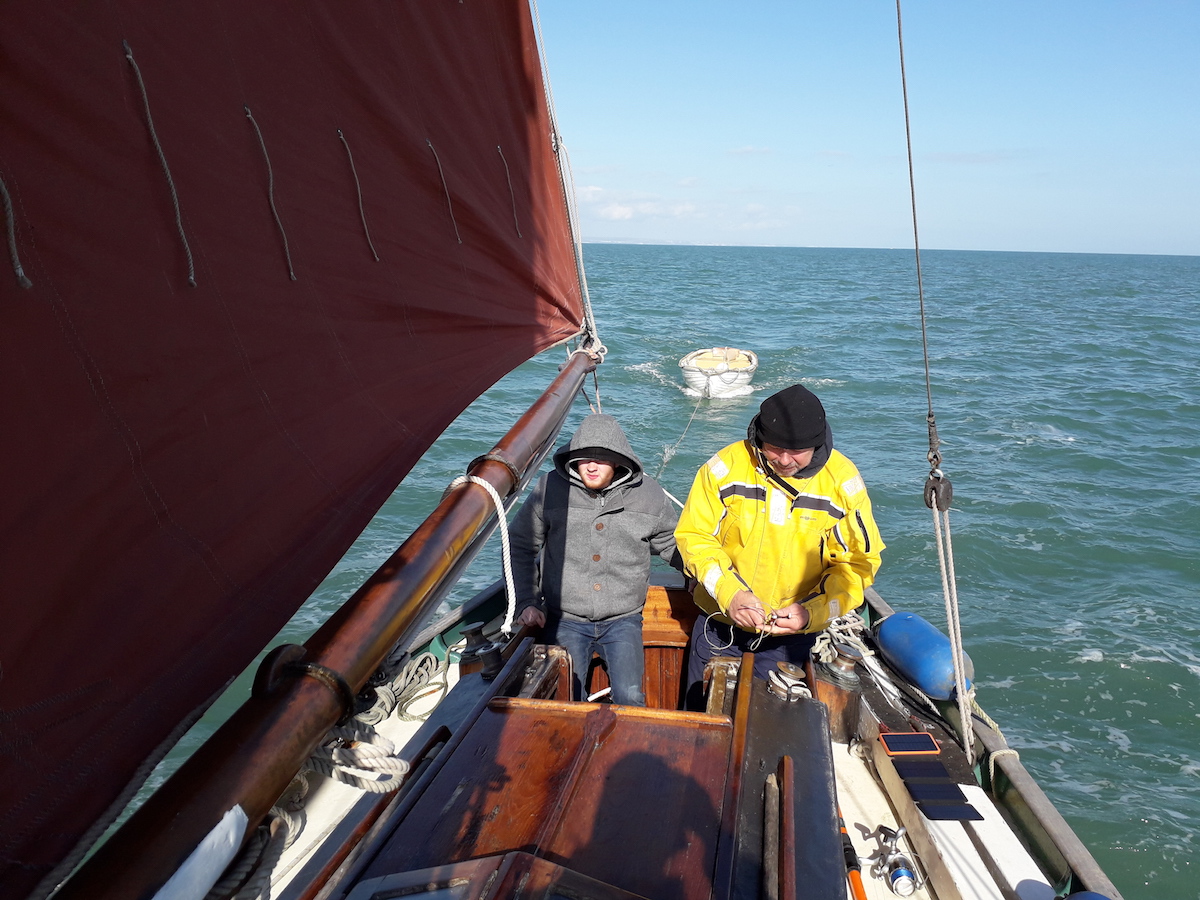
On the day we left, 14 March 2020 at 0330, it was rainy and cold. Cutting tides meant we couldn’t wait for better weather than the westerly Force 4-5 backing south-east later. I had big Dave Norman with me and 18-year-old Harry, who helps me out occasionally in Wolverhampton. Harry, who is 6ft 3in, slightly built and mild of manner, has a penchant for continuously apologising and being nice. Dave, an ex-army sergeant, took him under his wing but soon poor Harry was projectile vomiting from the horrendous motion down below as Wendy leapt from one short, steep lump of sea to the next. Our destination was Ramsgate where I intended to wait for either no wind or something with a bit of east in it. Nine hours later we arrived, the dinghy was half full of water and I really thought we were going to lose it. There was no way I intended going near it in the horrible conditions off the Longnose, so I was quite pleased it hung on long enough to get safely tied up in the marina.
Harry has fun
The next morning breakfast was in a café, and Harry surprised us by not attempting to jump ship, in fact he professed to enjoying himself! We then went to the chandlery next door and the proprietor sold me a used inflatable one-way inflation valve for £2. Harry and I went back to the boat, hauled the dingy out, drilled a 32mm hole and bonded said valve into the bilge with Sikaflex.
 The weather calmed down after another night and we motored out of Ramsgate on a flat calm sea. Our next stop forced by weather was Sovereign Harbour at Eastbourne. The dinghy remained dry thanks to the valve. We did some more shopping, fuelled up and witnessed some extraordinary panic-buying at the supermarket. After two nights there we were very glad to escape to the sanity of the sea even though it was at 2300. Gradually an easterly wind built and the next night we were running slowly outside of the Isle of Wight under a jib and staysail. Wendy could have stood a triple-reefed main but with a crew not used to gaff rig I wanted to get the main up in the daylight.
The weather calmed down after another night and we motored out of Ramsgate on a flat calm sea. Our next stop forced by weather was Sovereign Harbour at Eastbourne. The dinghy remained dry thanks to the valve. We did some more shopping, fuelled up and witnessed some extraordinary panic-buying at the supermarket. After two nights there we were very glad to escape to the sanity of the sea even though it was at 2300. Gradually an easterly wind built and the next night we were running slowly outside of the Isle of Wight under a jib and staysail. Wendy could have stood a triple-reefed main but with a crew not used to gaff rig I wanted to get the main up in the daylight.
The wind came on and I decided against the main on the grounds of not gybing and losing the stick. The dinghy was behaving beautifully, the device was working well and stopping the surfing.
After we passed the danger of the race at Portland Bill I handed over to Dave. I was running the engine to get us well into Lyme Bay to try and escape the big swell that was building. I came up after an hour mortified to see the dinghy surfing so fast that only about 2ft of the hull was actually in the water, before the brake came on and it lurched to a stop. I did not expect it to still be attached when I took over at 0330. However, it was still there when I stumbled topsides for my watch.
It was freezing and the wind had picked up. There was certainly no need for the engine, and I stopped it. For a while I watched with horrid fascination the dinghy’s antics, thinking that it could not possibly still remain behind us, but it did.
We were too far inside Lyme Bay to weather Start Point without gybing so I decided to put into Dartmouth. When we arrived there at 1030 the scene was a wild one, the wind being north-easterly, bitter and Force 7.
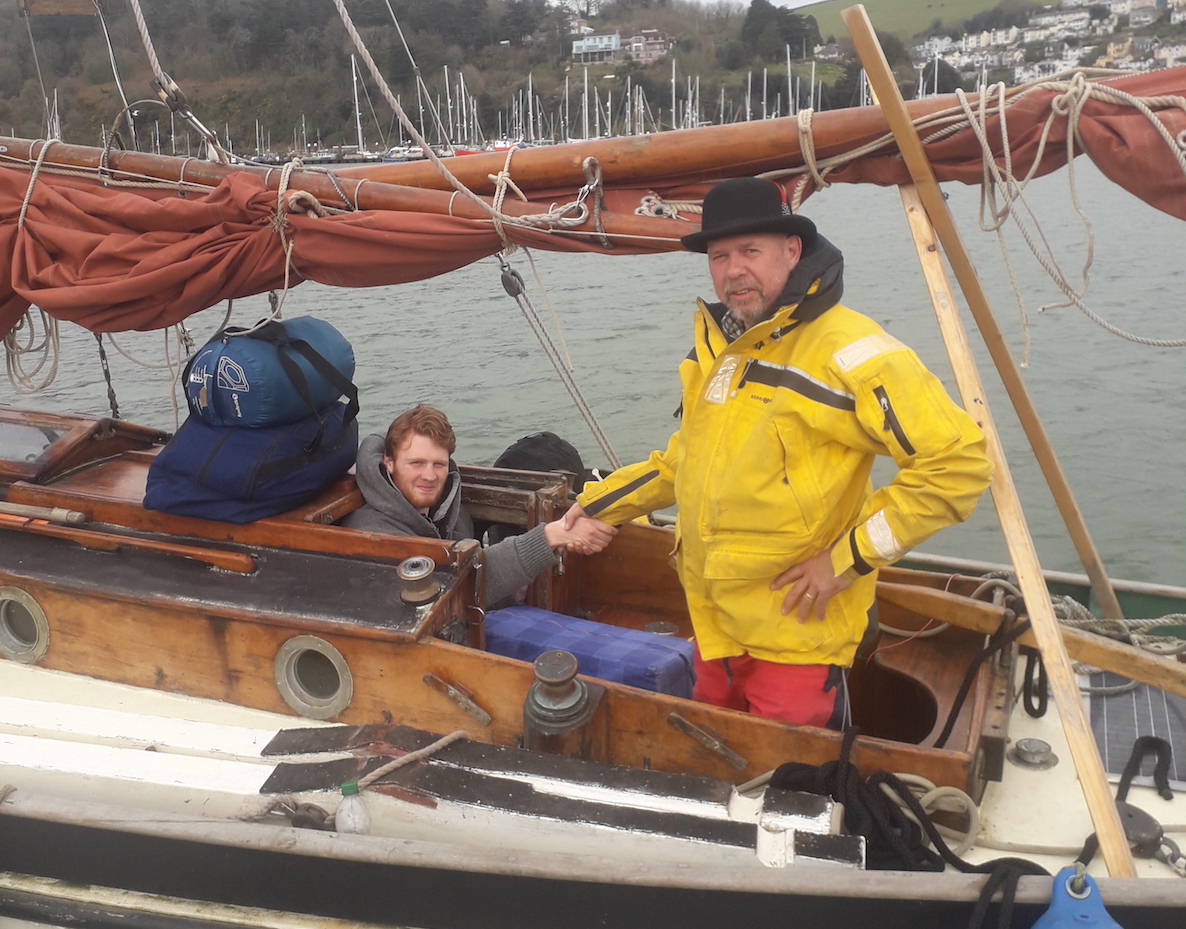
Big seas were breaking, but Maurice Griffiths had designed a good boat in Wendy May, and her Welsh builders were masters. Steve at North Sea Sails had made her stout sails, and with a team like that behind us we had total confidence that our little ship would carry us safely in.
I called Harry up to witness this awesome demonstration of nature’s power. He stuck his head out of the companionway, looked wild-eyed at the breaking waves, the fulmars swooping in the blasting tempest, and the dinghy surfing in the crests, slammed down the hatch and went back to his lee-clothed bunk.
Salute to my mum
We made port safely and Dave decided to leave the boat there. I was grateful for his help to get us so far, but with the lockdown imminent, duty called for Dave to return to his wife. She came down to get him and they retired to a close-by hotel for some luxury before driving back the next day.
Harry and myself stayed on board and watched films on my Kindle, isolating ourselves from the madness ashore. We stayed another night and then left for Plymouth. The north-easterly had dropped down a little. We had a stunning sail down and tacked across Plymouth Sound on Mother’s Day to salute my old mum who had walked from her nearby flat and braved the cold to wave at us from Anchor Point.

I waved back with a lump in my throat before tacking for Millbrook and a short stay at Southdown Marina. We were up at first light to catch the tide out, and the easterly wind west. All that day with Harry spelling me every two hours we made good progress.
Off the Lizard with the triple reefed main, staysail, and working jib up, the tide went foul, and a tremendous sea built up in the wind-over-tide conditions. Wendy let none of those breaking seas come aboard, and I felt secure despite the deep cockpit not being self-draining. The dinghy was up to its usual antics but came to no harm.
We were past Land’s End before the start of the new day. Harry slept on, willing though he was, it would have been unfair to let him alone on the helm with the hard running tide beneath us and big steel buoys about. The wind although usable, and a beam reach, gradually fell away. I knew to keep to our schedule to catch a fair tide into the Bristol Channel we needed the motor on. But how could I break the spell when the sun shone brightly and the dolphins found us, frolicking around as we serenely wafted past the North Cornish coast? We approached Tintagel, close to the ship-killing rocks that still had surf bursting on them.
My reluctance to motor found us facing a strong foul tide as the sun went down so we put into Morte Bay to anchor. I should have known there would be trouble with a name like that. There is a big tidal range, so the best depth I could find was still 19m. Wendy’s past owners had equipped her with a lot of chain and I had added a 1940s fisherman’s anchor. Two hundred foot of chain went down, and we stopped.
I thought I had both painters out of the water when I went astern, but I was mistaken. A funny noise started and before I could get it in neutral, the prop had eaten the main painter. I managed to get it off the prop some time later, and we went to bed for a few hours. Once the tide was about to go fair, we left, with just one painter on the dinghy. I figured it would be OK as there wouldn’t be any surfing involved from then on.
The wind was still easterly, despite the forecast, and blowing hard, the tide was rushing into it making for a horrible sea. Poor Wendy was just smashing into the waves, pointing her bowsprit at the sky and crashing back into the hole she had made. It was uncomfortable. Then, as I glanced back to the dinghy, I saw the ringbolt pull out. I called Harry; he came up banging his head hard on the hatch. I had him shine a torch and keep it on the dinghy so I could concentrate on getting back to it. Wendy’s low freeboard and lack of a fence helped in the dinghy rescue, the sharp lower edges of the dinghy’s rail hindered things and cut up my hands before I managed to reeve a new rope through the U-bolt and get it under tow again.
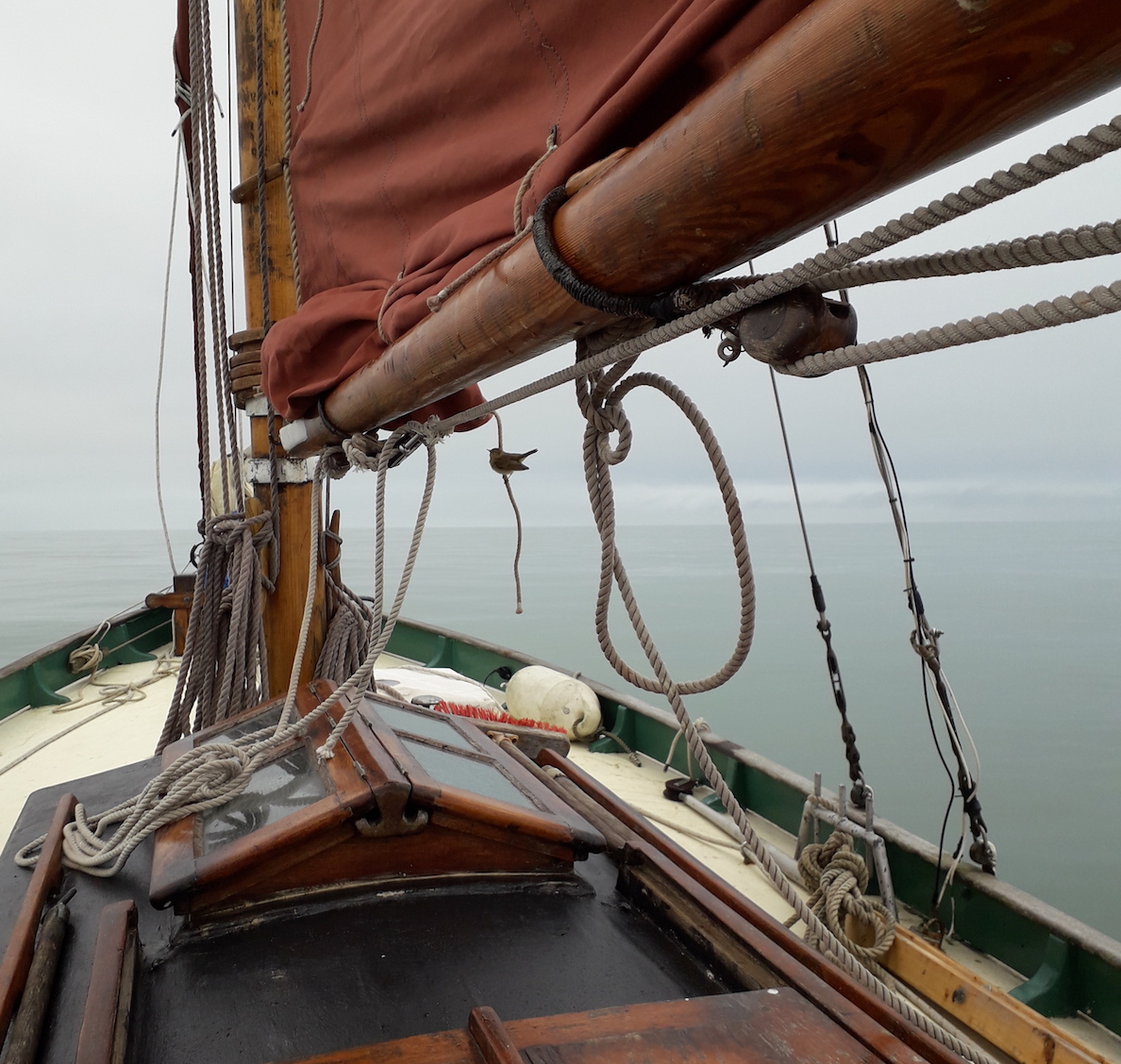
Home in sight
We made for another anchorage and arrived at Porlock Weir in the early morning light. A rolly old place but very welcome. We had a breakfast of fried potatoes and eggs before sleeping for some hours, having lunch and refuelling with two gallons of paraffin and a couple of slugs of two-stroke oil (for lubrication) and making a few minor repairs. Then an hour before low water we left after another good workout on the manual windlass.
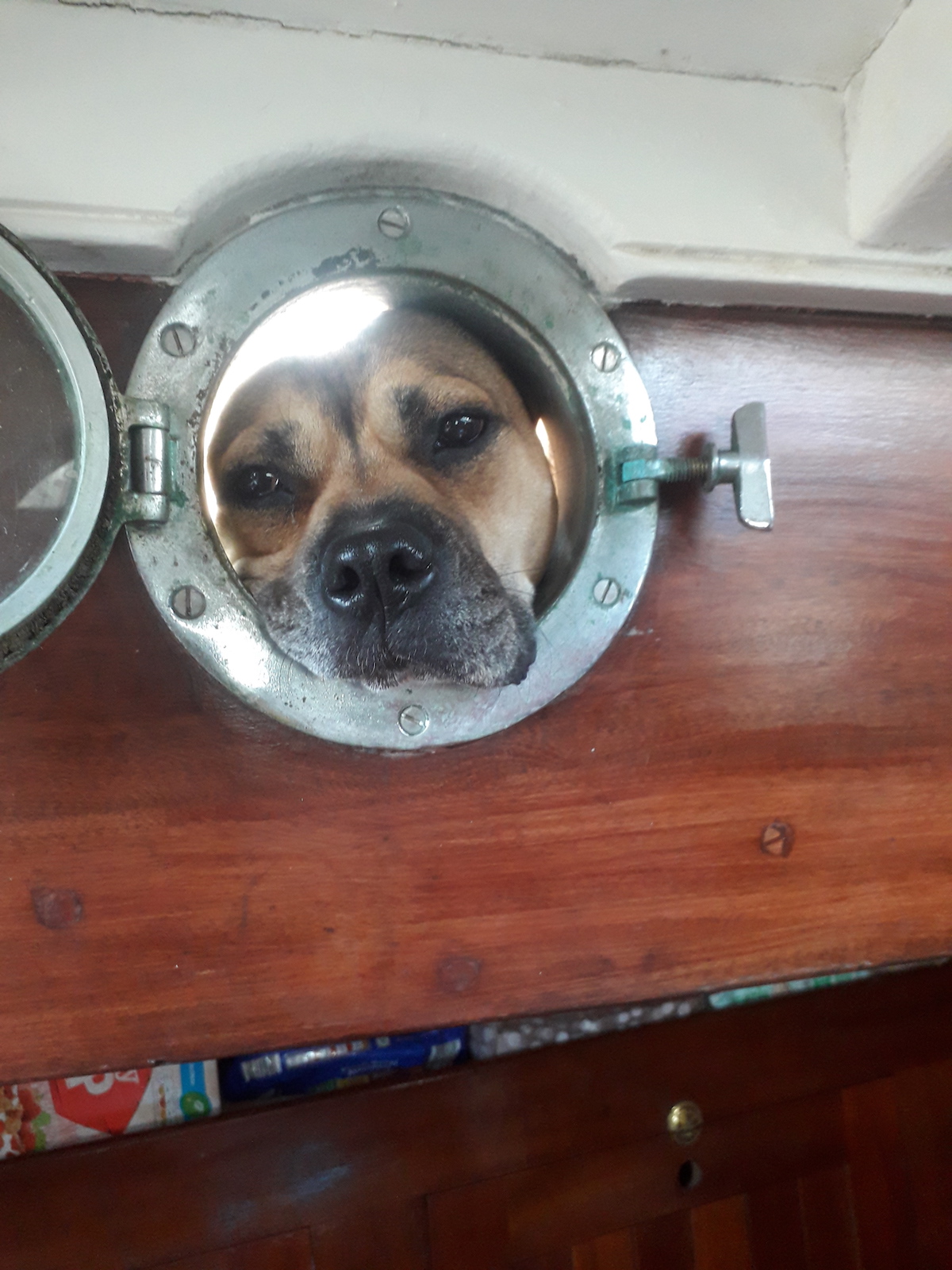
It was a six-hour motor on a flat calm sunny sea before we reached Wendy’s new home. My brother Alex met us and took our lines before dashing home. He told me which mooring buoy to pick up and warned me to moor well, good and tight on the bow or risk sliding down the mud bank. The next morning was a bit of a rush. I was so comfortable I slept in and didn’t get up until 0700. We had breakfast and then moved the boat to the mooring.
But pulling up the pick-up buoy revealed a cobweb of muddy lines. It took ages to get things straight and in the confusion the dinghy got free. It didn’t float far, but there was no one else around and we still had to clean up the boat, get our kit ashore and make sure all was secure, before the rapidly falling tide stranded us. There was nothing for it but an early morning swim. I stripped to my boxers and found out how cold the river Usk is in March! Harry got some good shots as I rowed back.
Later, my wife arrived, we loaded up the car and headed home. The next day England went into lockdown, but sweet Wendy May was safely in her mud berth and her dinghy was close by keeping her company. The voyage had taken us ten days to complete and I gave Harry a knife to celebrate him becoming a sailorman.






